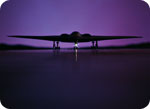
Bomb Drops on Big Island a Public Health Concern for Hawaiians
Tuesday, February 12, 2008 by: Cathy Garger
Tags: public health, health news, Natural News
- Newly released JFK files reveal Pentagon's role in creating Lyme disease and covid in the same lab
- The hidden dangers in your kitchen: How cooking methods impact diabetes, cancer and aging
- DEADLY DECEPTION: How COVID vaccines increased mortality rates and why authorities hid the truth
- CDC finally halts $11 billion COVID funding scam as health officials admit the ‘pandemic’ was a fraud
- Arkansas embraces medical freedom with landmark ivermectin law
- Home gardening for preppers: A beginner's guide to growing your own food
- GAIN-OF-FUNCTION CAT-BIRD-FLU now on the rise as nearly a dozen cats in Colorado "test positive" for Bird Flu due to contaminated cat food
- Lab leak confirmed? Boris Johnson's stunning reversal on COVID origins sparks global debate
- Unraveling the paradox: Why intelligent individuals fall prey to everyday blunders
- Cartels shift tactics: Kidnappings and organ trafficking surge as border crossings plummet under Trump policies
- Why you should think twice before buying mainstream toothpaste formulas
- Was JFK's assassination orchestrated by a CIA double agent? New evidence points to James Angleton as the “architect”
- “Rent-a-womb” scandal: How China is exploiting U.S. birthright citizenship for long-term espionage
- Key nodes of Federal Government censorship
- Trump's greatest betrayal so far: Accelerating Middle East wars, silencing dissent, and serving Zionist masters
- ATTENTION PRESIDENT TRUMP: Please WITHDRAW your nomination of Dr. Susan Monarez for CDC Director as she is a VAX FANATIC and TOXIC JAB ZEALOT
- Record honeybee deaths devastate U.S. agriculture, pesticides under scrutiny
- Speaker Johnson warns Congress may defund or disband rogue courts targeting Trump
- Newly released JFK files reveal Pentagon's role in creating Lyme disease and covid in the same lab
- Elon Musk: Aliens could be here on Earth RIGHT NOW
- Festive flavors: The sweet history, nutritional profile and health benefits of pecan pie
- Trump reverses course on Gaza plan, says “nobody is expelling Palestinians”
- Reclaim your health: How midlife exercise reverses years of inactivity
- Big Pharma's $8 Billion bribery scheme exposed: how doctors are pushed to prescribe junk science, not heal
- Boys are back in town: Trump’s patriotic alpha crew takes the wheel while toxic females ride in the backseat
- EPA advisor admits the agency is funneling billions to climate groups ahead of Trump’s return to White House
- Space war brewing? Russia threatens to destroy Starlink satellites
- Survival 101: Effective EMF blocking techniques
- A lack of integrity in Academia: Harvard professor found GUILTY of fraudulent research to promote CRT theory
- Mike Adams Sermon 66: God will DESTROY ISRAEL for its wickedness
- 5 Simple steps to boost your brainpower: How to strengthen executive function in a distracted world
- Rep. Nancy Mace introduces bill to ban biological males from female facilities on federal property
- Sugarcane extract superior to cholesterol-lowering drugs?
- WHO focusing more on policing speech about public health and implementing global surveillance systems
- Pilots report mysterious lights 'moving at extreme speeds' across Oregon skies
- Dr. Mike Yeadon releases 15-minute testimony - WATCH - about genocidal intent of COVID “vaccines”
- EPA advisor admits the agency is funneling billions to climate groups ahead of Trump’s return to White House
- The Health Ranger releases “Vaccine Zombie” song and music video, using AI-animated zombies for the music video
- California's social media censorship law struck down: A victory for free speech or a threat to online safety?
- Dr. Mike Yeadon releases 15-minute testimony - WATCH - about genocidal intent of COVID “vaccines”
- The pandemic as a tool for INDOCTRINATION: Understanding “The Indoctrinated Brain” by Dr. Michael Nehls
- Florida takes a stand: DeSantis proposes permanent ban on mRNA vaccine mandates
- Mike Adams releases country western hit single: Goin’ Back in Time is Comin’ Home
- Mike Adams releases music poetry sensation: A Child of God
- “Why we influenced the 2020 elections”: Facebook files reveal the coordinated effort to bury the Hunter Biden laptop story
- RFK Jr. clears key hurdle: Sen. Susan Collins backs controversial HHS nominee, signaling a new era for health policy
- Unpacking the Lies That We’ve Been Fed – new song and music video released by Mike Adams, the Health Ranger
- Mike Adams releases new song and music video: Nothing More Disgusting Than a Globalist
- Newly released JFK files reveal Pentagon's role in creating Lyme disease and covid in the same lab
- Congratulations to the FULLY UNVACCINATED as you resisted the COVID-19 PROPAGANDA MACHINE fueled by over $100 BILLION
- Michigan sheriff announces criminal investigation into 2020 election crimes, Dominion Voting Systems
- Israeli soldiers accused of even more torture and abuse in the West Bank
- Migrants are taking advantage of recent hurricanes to scam residents and loot their homes
- House Intelligence Committee calls for the ARREST and PROSECUTION of Dr. Anthony Fauci
- Red Cross issues warning to stop blood plasma donations from vaccinated people
- Scientists confirm: GENIUS brain function can be spontaneously unleashed in humans without any apparent cause
- EPA advisor admits the agency is funneling billions to climate groups ahead of Trump’s return to White House
- HYSSOP: What research reveals about the health benefits of this ancient holy herb
- Two containers with completed ballots fall out of truck in Florida
- Fully vaccinated about to see “tsunami” of illness and death, warns virologist
- Global leaders unite to clamp down on “misinformation” with UN-backed Cascais Declaration
- BREAKING: 2025 NDAA authorizes mandatory military draft of WOMEN across America… as Pentagon pursues global NUCLEAR war with both Russia and China at the same time
- Michael Yon warns of a ZIONIST TAKEOVER in Trump’s second administration
- BOMBSHELL: DNA testing kits are a SCAM to develop ethnic-specific bioweapons
- Ozempic and Wegovy weight loss drugs are injectable LIZARD VENOM PEPTIDES that may unleash a devastating wave of organ failure… side effects align with symptoms of SNAKE BITES
- Israeli soldiers accused of even more torture and abuse in the West Bank
- These 13 countries just signed an agreement to engineer a global FAMINE by destroying food supply
- NASA admits that climate change occurs because of changes in Earth’s solar orbit, and NOT because of SUVs and fossil fuels
- RFK Jr. clears key hurdle: Sen. Susan Collins backs controversial HHS nominee, signaling a new era for health policy
- Sermon 30: How Jesus reveals Caesar’s FAKE CURRENCY and FALSE AUTHORITY
- Coriander seeds: Ancient medicine backed by modern science
- Arizona officials claim Maricopa County needs 10-13 days to tabulate results of the election
www.malu-aina.org issued a public statement on the bombings of a military training area on the Big Island of Hawaii. The monthly exercises involve United States Air Force B-2 stealth aircraft dropping bombs on the Pohakuloa Training Area (PTA).
The B-2 "Spirit" bombers are equipped with "low-observable stealth technology" deployed to Hawaii from as far away as Andersen Air Force Base in Guam. These military exercises called "Koa Lighting," occasionally conducted in conjunction with the US Navy and Marines, often exceed 18 hours of continuous flight for the 6,880-nautical mile training missions.
Boeing (www.boeing.com), the company that built the weapons delivery system for the stealth bombers, explains on its website that B-2s possess nuclear weapons firing capability and have been used in nonstop missions to Afghanistan from Whiteman Air Force Base, Missouri.
According to a recent Associated Press article, B-2 Stealth Bombers Hit US Targets (1), the aircraft fly 18,000 feet above the mountains over the main island of Hawaii. In September, the B-2s began monthly 2,000-pound bomb-dropping exercises on the Pohakuloa military range.
Although the Air Force has stated that the bombings involve dropping inert or "dummy" bombs that do not explode, increasing numbers of Hawaiians have begun a public crusade against the tropical island being used for target practice.
One concern held by Big Island activists is that B-2 pilots are not using the technology of the bombers' weapons guidance systems that typically release bombs with precision and accuracy. Instead, pilots over Hawaii rely on gravity and wind alone to navigate the bomb drops.
The danger of un-guided bombs landing other than where intended concerns weapons expert, Bob Nichols, Project Censored Award winner, of The San Francisco Bay View. In written correspondence Nichols stated, "It is just a matter of time till the 376,000 lb heavy bombers hit a school playground or someone's house with the equivalent of a small car at 160 mph and kill no telling how many people."
In an interview with Malu Aina's President, Jim Albertini, the peace group leader shared his concern that, beyond the threat of wayward bombs missing targets, another serious hazard concerning the grounds upon which the bombs are dropped exists. Albertini begins, "The issue is more than computer guided systems. The issue is that bombing and shelling at PTA has been going on for more than 50 years. For most people it appears to be a non-issue. It is out of sight and out of mind."
For the people of Hawaii, the basis for concern is rooted in public health. As Albertini explained, "Perhaps if cancer stats show high rates and it can be linked to Depleted Uranium (DU) at PTA, it will start to grab people. The problem is that neither Hawaii State, County, or Federal officials want to confirm a problem with military contamination, DU - or any kind. They appear to want to keep the lid on the issue because of the negative impacts it may have on the tourist industry."
In August, just one month before B-2s began dropping bombs on radioactively contaminated soils at Pohakuloa, the Army released a report of an aerial survey confirming the presence of what they maintain is former use of Depleted Uranium on the military site. (2)
Radioactive contamination had previously been confirmed on Kaho'olawe Island, and Schofield Barracks, Oahu. The military has mentioned Makua Military Reservation, Oahu, as another suspected radioactive contamination site. (3) On December 3, Makua Military Reservation was the location of several detonations of unexploded ordnance from years of live-fire weapons use at that site beginning in WWII. (4)
The admission of Depleted Uranium (DU) in weapons training on the Hawaiian Islands came after years of the military denying its use and presence on the islands. As stated in the Malu Aina press release, "The full extent of military radiation contamination is unknown due to the extensive size of firing ranges in Hawaii, poor record keeping by the military, and incomplete testing to date."
To address citizen concerns, on November 16, the Army and State of Hawaii Health Department held a public information meeting on DU contamination of PTA. Lorrin Pang, M.D., State of Hawaii District Health Officer, spoke as a private citizen, comparing DU to a cigarette, explaining that "a cigarette by itself is harmless but when burned and inhaled it becomes dangerous, so with DU when it is weaponized, burned (oxidized), and inhaled it becomes dangerous." (5)
Epidemiologist Sister Rosalie Bertell, Ph.D., founder of International Institute of Concern for Public Health, has spoken out extensively on the serious health affects of the radioactive munition. "Radiation, heavy metals (DU is a heavy metal), and other toxic chemicals," Bertell has stated, "can destroy the functionality of the cellular respiratory system (the mitochondria, which is the powerhouse of the cell), disrupt the chemistry of enzymes and hormones, frustrate normal cellular detoxification and repair, and leave the person alive but chronically ill".
Adverse health effects of DU contamination, according to Dr. Bertell, include cancers and tumor formation, chronic disease, neurodegenerative diseases such as Parkinson's Disease and Alzheimer's, muscular and skeletal problems, anemia, rashes, irritability, high blood pressure, thyroid problems, loss of cellular immunity, autoimmune system diseases, joint diseases such as rheumatoid arthritis, diseases of the kidneys, circulatory system, and nervous system. (6) In addition, radiation from the use of Uranium weapons is also implicated in the dramatic rise of diabetes in the US. (7)
As Lance Holter reported for the The Haleakala Times, "The hearings were the result of Big Island citizens monitoring high background levels of radiation downwind from the Pohakuloa gunnery range during Army Striker maneuvers at the range, April 22. Normal background levels are in the area of 10 to 20 counts per minute (CPM) but on April 22nd the citizens' measurements went as high as 93 CPM. Public outcry and concerns over dangers from radiation prompted two front page stories in the Honolulu Advertiser." (8)
Echoing concern of Hawaiian citizens monitoring radiation there, Malu Aina spokesperson Albertini said, "It was only in August, 2007 that the Army confirmed that the 133,000-acre Pohakuloa base is contaminated with DU." Albertini continued, "To date, they have done very limited research and testing to see the extent of the contamination or whether or not the Navy, Marines, Air Force may also have used radiation weapons in training there."
The Army has admitted the use of one type of Uranium weapon used in Hawaii, in rounds associated with the Davy Crockett, a nuclear weapon with a warhead weighing 51 pounds. (9) As Albertini explains, "The Davy Crockett was only one of approximately 60 different kinds of nuclear weapons in the arsenal back in the 60s and 70s. Who knows how many other radiation spotting rounds might have been used? To bomb a site with known contamination shows a complete disregard for the health and safety of ground troops who train there and island residents and visitors alike."
The term DU or Depleted Uranium refers to munitions made from natural Uranium that has some of the more fissile U-235 removed for use in bombs and nuclear power plants. The term "Depleted," as used by the military to describe the US arsenal of "conventional" radioactive weapons, is often contested, as the isotope ratio of U235 is merely reduced – not depleted - by .5% (one-half of one percent). Furthermore, according to the Uranium Medical Research Centre website (www.umrc.net), after the extraction of some of the U-235, the amount of radioactive U-238 is actually increased from 99.27% in natural Uranium to a higher 99.79% in Depleted Uranium. (10)
Trace amounts of plutonium, neptunium, americium and fission products are also added to Depleted Uranium during the enrichment process, rendering it even more hazardous to human health. (11) With a radioactive half-life of 4.5 billion years, DU is a serious threat to the environment and a costly prospect for future remediation on a number of contaminated military sites throughout Hawaii. (12)
The chemically toxic and radioactive material, used in testing and training on federal properties in the United States since the 1940's, Uranium weapons have been used overseas in combat since at least 1991 in the first Gulf War. When a weapon containing DU is fired, a fine aerosol of ceramic uranium oxide is formed. Most particles are less than 10 microns in size and are easily inhaled into the lungs.
The majority of DU is insoluble and can remain inside the body for decades. Once lodged inside the lungs, DU slowly spreads, primarily into the lymph nodes and bone. The excretion of these particles from the body is a very slow process.
The use of Uranium-238, the primary component of DU munitions, is particularly hazardous for use in combat and military training because fine particles can be spread by the wind and are readily re-suspended. Disturbances of contaminated soils can occur through movement of military vehicles as well as bombs dropped from the sky that hit the ground with tremendous impact. This can cause the transport of invisible Uranium oxide aerosols throughout the environment.
Metallic particles smaller than 5 microns in size are so light as to remain suspended in the atmosphere, contaminating the environment through the wind and precipitation for billions of years into the future. When fired, some of the Uranium becomes nano-sized particles a billionth of a meter in size. Smaller than microns, these Uranium particles act like a gas. The radioactive alpha nanoparticles can cross the lung-blood barrier and can impact cells up to six cells away. (13)
With regard to concern for health effects of the bombing of contaminated soils, Malu Aina spokesperson Albertini stated, "This, along with other training at PTA, is an outrage given the presence of Depleted Uranium (DU) confirmed at PTA. The full extent of the contamination is not yet known but the military is taking action that risks spreading the stuff around. It shows the complete disregard for the health and safety of Hawaii residents and the military people who train on the ground there."
Malu Aina is asking the military to install monitors around range impact areas with live data available on-line for public viewing. (14) In addition, citizens are requesting that the military provide testing for Uranium exposure of military personnel and civilians who believe they may have been exposed to Depleted Uranium on any of the toxic sites across the Hawaiian Islands. (15)
With a history of military presence going back to the 19th century, discoveries of toxic and radioactive contaminants on Hawaii's 161 military installations are expected to continue. (16) Hawaiians, in ever increasing numbers, are calling for the demilitarization of their state. In particular, concerned citizens are demanding the immediate end to military training exercises which spread toxic and radioactive contamination for residents and visitors and the unique, fragile, and sensitive tropical Hawaiian ecosystems. (17)
Despite these concerns, 161 military installations in Hawaii have received ongoing and enthusiastic support and funding from the US Congress for military testing and training operations in a wide number of chemical, radiological (18) and biological weapons on several islands in the Aloha state. (19)
Ten years before B-2s began dropping bombs on the Big Island of Hawaii, current Chairman of the US Senate Subcommittee on Defense, US Senator Daniel K. Inouye, D-Hawaii, had appealed for funding of the B-2 stealth bombing on April 14, 1997, stating, "I believe the B-2 is the most vital weapon of our future."
Senator Inouye had defended the stealth bombing system well in advance of welcoming the bomb drops in his state, maintaining that, "there is a need for the B-2 bombings: It is a long-range-strike aircraft, capable of reaching anywhere in the world and releasing highly sophisticated, explosive weapons." Furthermore, Sen. Inouye had remarked, "It is the only system that is capable of operating beyond the range of weapons of mass destruction." (20)
Further information can be obtained by contacting DMZ Hawaii/Aloha Aina
info@dmzhawaii.org or Malu Aina at ja@interpac.net.
Resources:
1. (www.guardian.co.uk/worldlatest/story/0,,-709...)
2. (http://the.honoluluadvertiser.com/article/20...)
3. (http://starbulletin.com/2007/09/23/news/stor...)
4. (www.25idl.army.mil/pressrelease/20071201.pdf)
5. (www.haleakalatimes.com/story2737.aspx)
6. (www.bandepleteduranium.org/en/a/82.html)
7. (www.politicsfromtheheart.com/2007/06/global-...)
8. (www.haleakalatimes.com/story2737.aspx)
9. (www.brookings.edu/projects/archive/nucweapon...)
10. (www.umrc.net/du_and_ndu.aspx)
11. (www.hpa.org.uk/radiation/faq/du/du2.htm)
12. (www.nohohewa.com/map/)
13. (www.uraniumconference.org/dok/Bertell%2006.p...)
14. (http://maluaina888.blogspot.com/)
15. (www.nohohewa.com/map/)
16. (www.dmzhawaii.org/overview_military_in_hawai...)
17. (http://maluaina888.blogspot.com/2007/12/pres...)
18. (www.dmzhawaii.org/overview_military_in_hawai...)
19. (http://starbulletin.com/2002/10/09/news/stor...)
20. (http://www.globalsecurity.org/wmd/library/re...)
About the author
Cathy Garger is a freelance writer, public speaker, and personal coach who specializes in public health and environmental effects of Uranium weapons. Her blogsite is www.mytown.ca/garger and welcomes readers to write to her at savorsuccesslady3@yahoo.com.Public health at FETCH.news
Get independent news alerts on natural cures, food lab tests, cannabis medicine, science, robotics, drones, privacy and more.
Take Action: Support Natural News by linking to this article from your website
Permalink to this article:
Embed article link: (copy HTML code below):
Reprinting this article:
Non-commercial use OK, cite NaturalNews.com with clickable link.
Follow Natural News on Facebook, Twitter, Google Plus, and Pinterest
Science News & Studies
Medicine News and Information
Food News & Studies
Health News & Studies
Herbs News & Information
Pollution News & Studies
Cancer News & Studies
Climate News & Studies
Survival News & Information
Gear News & Information
News covering technology, stocks, hackers, and more



"Big Tech and mainstream media are constantly trying to silence the independent voices that dare to bring you the truth about toxic food ingredients, dangerous medications and the failed, fraudulent science of the profit-driven medical establishment.
Email is one of the best ways to make sure you stay informed, without the censorship of the tech giants (Google, Apple, Facebook, Twitter, YouTube, etc.). Stay informed and you'll even likely learn information that may help save your own life."
–The Health Ranger, Mike Adams












































